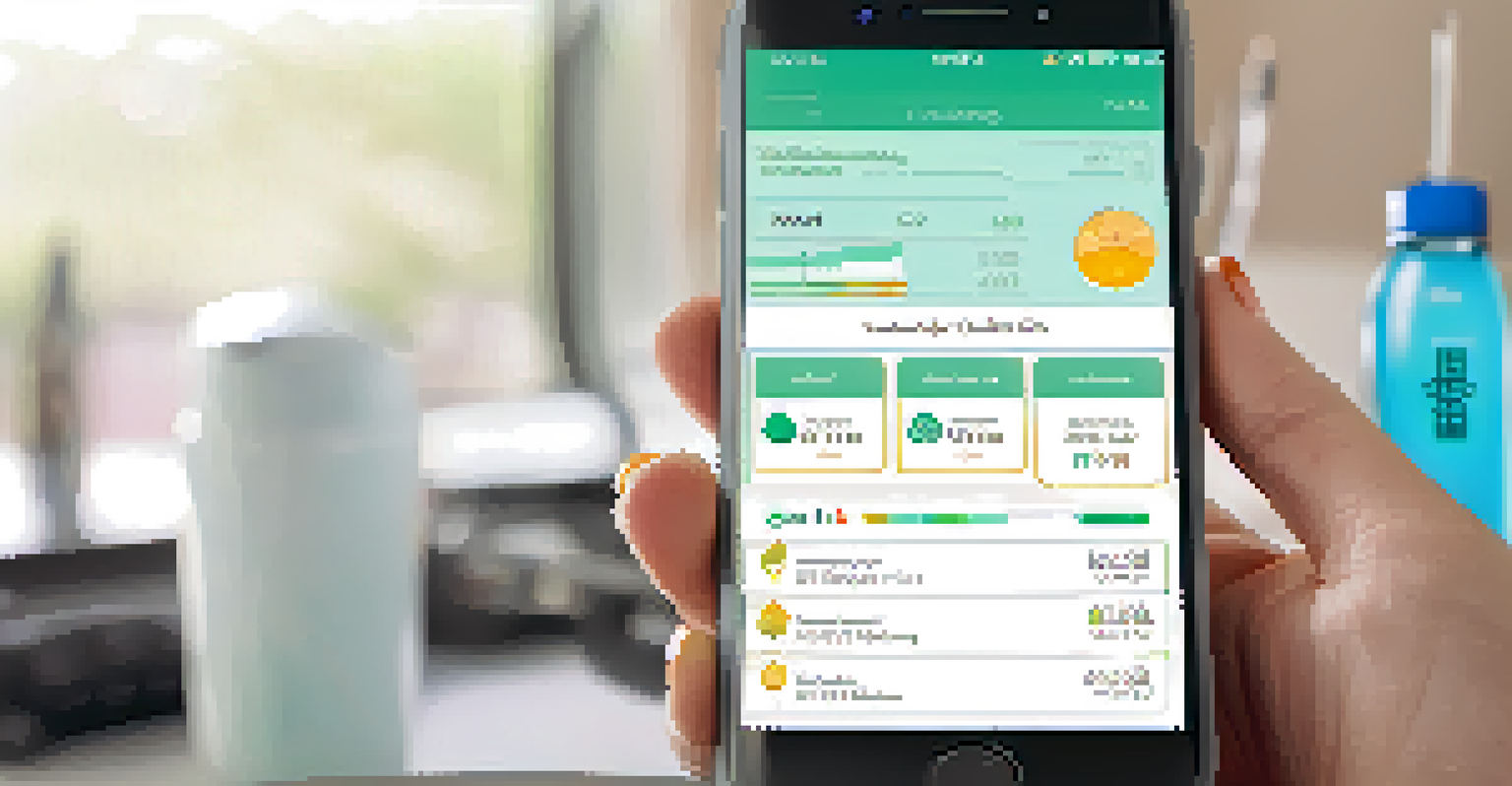Wellness Challenges: Engaging Employees in Healthy Habits

Understanding the Importance of Wellness Challenges
Wellness challenges are more than just a fun way to engage employees; they play a crucial role in fostering a healthier workplace. By encouraging participation in activities that promote physical and mental well-being, companies can create a culture of health. This not only benefits individual employees but also enhances overall productivity and morale within the organization.
Wellness is not a luxury; it is a necessity for a productive workforce.
When employees feel supported in their wellness journeys, they are likely to experience reduced stress levels and improved job satisfaction. These challenges can be tailored to meet diverse interests and fitness levels, making them inclusive for everyone. Ultimately, promoting wellness challenges is a proactive approach to employee care that yields significant returns.
Moreover, these initiatives can help prevent burnout and absenteeism, which are common issues in today’s fast-paced work environments. By investing in employee health through wellness challenges, employers demonstrate a commitment to their workforce's well-being, leading to a more engaged and loyal team.
Designing Effective Wellness Challenges
Designing a successful wellness challenge starts with understanding your team's needs and preferences. Consider conducting a survey to gather insights on what types of activities employees would find motivating. This could range from step challenges to mindfulness workshops, ensuring the options resonate with a broad audience.

Next, establish clear goals and rules for the challenge, allowing participants to track their progress easily. For instance, you might set a target of collectively walking a certain number of miles or completing a specific number of wellness activities over a month. Clarity in objectives helps foster friendly competition and keeps everyone engaged.
Wellness Challenges Boost Engagement
Participating in wellness challenges fosters a healthier workplace culture, enhancing employee productivity and morale.
Lastly, don't forget to incorporate fun elements and incentives. Offering rewards for achievements can significantly boost participation and enthusiasm. Whether it’s gift cards, extra vacation days, or simply recognition in a company newsletter, these incentives can motivate employees to commit to their wellness goals.
Promoting Participation in Wellness Challenges
To maximize participation in wellness challenges, effective communication is key. Use various channels—such as emails, team meetings, and internal social platforms—to promote the challenge and its benefits. Highlighting success stories or testimonials from previous participants can also inspire others to join in.
The greatest wealth is health.
Creating a sense of community is another vital aspect. Consider forming teams or groups that encourage camaraderie and support. When employees feel part of a collective effort, they are more likely to stay engaged and motivated throughout the challenge.
Additionally, regular updates on progress can spark interest and maintain momentum. Sharing weekly leaderboards or celebrating milestones can remind participants of their achievements and the fun they’re having. This ongoing engagement is essential to keeping the spirit of the challenge alive.
Incorporating Variety in Wellness Challenges
Variety is the spice of life, especially when it comes to wellness challenges. By offering a mix of activities—such as fitness, nutrition, and mindfulness—you can cater to diverse interests and keep things exciting. This approach not only attracts more participants but also helps employees explore new ways to improve their well-being.
Consider rotating challenges monthly or quarterly to maintain interest. For example, one month could focus on physical activities like running or cycling, while the next could emphasize mental wellness through meditation and stress management workshops. This keeps employees engaged and encourages them to participate in different aspects of wellness.
Variety Keeps Wellness Fun
Incorporating diverse activities in wellness challenges appeals to different interests, encouraging broader participation.
Moreover, this variety allows employees to find what resonates with them personally, fostering a deeper connection to their health journeys. As they try new activities, they might discover passions they never knew they had, further promoting a culture of wellness in the workplace.
Leveraging Technology for Wellness Challenges
In today's digital age, technology can play a pivotal role in enhancing wellness challenges. Utilizing apps and platforms that track progress can make participation more engaging and interactive. For example, fitness trackers can help employees monitor their activity levels, while wellness apps can provide resources like workout videos or healthy recipes.
Additionally, creating an online community or forum can facilitate communication among participants. This space allows employees to share tips, celebrate achievements, and encourage one another throughout the challenge. By leveraging technology, you can foster a supportive environment that enhances the overall experience.
Moreover, data collected from these platforms can provide valuable insights into employee engagement and success rates. Analyzing this information can help refine future challenges and tailor initiatives to meet employee needs better. This data-driven approach ensures that wellness challenges remain relevant and beneficial.
Measuring the Success of Wellness Challenges
Measuring the success of wellness challenges is essential to understanding their impact on employee health and engagement. Establishing key performance indicators (KPIs) before the challenge begins can help you gauge effectiveness. Common metrics might include participation rates, employee feedback, and changes in health-related behaviors.
Surveys conducted post-challenge can provide insights into participants’ experiences and areas for improvement. Questions could focus on what they enjoyed, what they found challenging, and suggestions for future initiatives. This feedback is invaluable for refining future challenges and ensuring they resonate with employees.
Technology Enhances Participation
Leveraging technology, such as apps and online communities, can make wellness challenges more engaging and supportive.
Additionally, tracking changes in metrics like absenteeism and productivity can offer a broader view of the challenge’s impact on the workplace. If employees report feeling healthier and more engaged, it’s a clear sign that your wellness initiatives are making a difference.
Sustaining Healthy Habits Beyond Challenges
While wellness challenges are a fantastic starting point, sustaining healthy habits beyond these initiatives is crucial. Encouraging employees to integrate wellness into their daily routines can lead to lasting lifestyle changes. This might involve creating workplace environments that support healthy choices, such as providing nutritious snacks or offering flexible work hours for exercise.
Providing ongoing resources and support can also help employees maintain their progress. Regular workshops, wellness newsletters, or access to wellness coaches can keep the momentum going long after a challenge ends. By fostering a culture of wellness, organizations can empower employees to prioritize their health continuously.

Finally, celebrating successes—big or small—can reinforce the importance of these habits. Recognizing employees who maintain their wellness journeys or achieve personal goals can inspire others to follow suit. This ongoing support creates an environment where health is valued, making it easier for everyone to stay engaged in their wellness journeys.